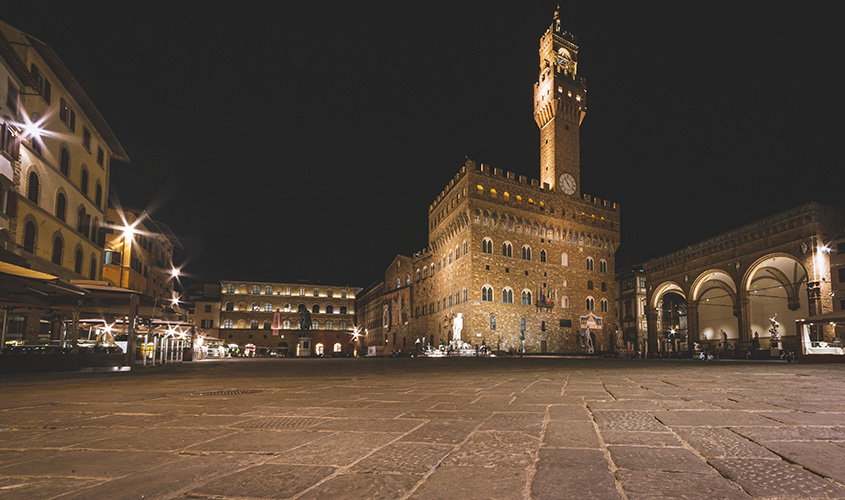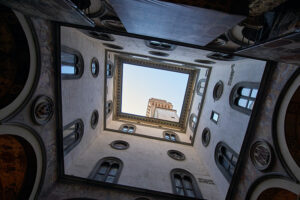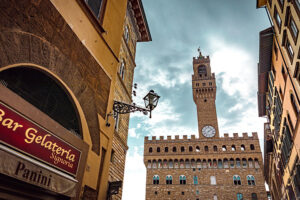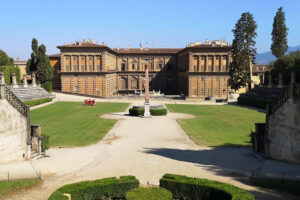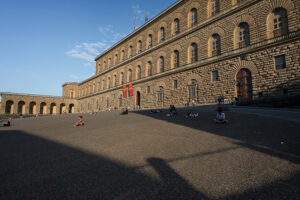Discover Piazza della Signoria
Airy and spacious, lined by gleaming flagship stores and elegant cafés, and enriched by statues, a fountain, and a stately ancient palace. Piazza della Signoria is the civic heart of Florence and the core of its daily cosmopolitan life.
How to get to Piazza della Signoria
This beautiful square is so central, both physically in the city and emotionally in the hearts of the locals, that it will take you no time to locate it. In fact, it’s just a 5-minute walk from the Duomo, Florence’s Cathedral, and virtually around the corner from the Ponte Vecchio. If you’re at the Duomo, just walk down the Via dei Calzaiuoli, and you’ll be there in no time. If you’re staying in the Oltrarno neighborhood, that is to say on “the other side” of the Arno river, walk across the Ponte Vecchio, then straight ahead along Via Por Santa Maria and then take a right: the square will be right there in front of you.
Piazza della Signoria history
Today, Piazza della Signoria serves as a pleasant meeting point for Florentines, tourists, and travelers of all ages, but it also plays a leading role in the city’s political life, seeing as the majestic Palazzo Vecchio is Florence’s town hall. Truth be told, Piazza della Signoria has been the civic center of Florence, ever since the 14th century, but was a key spot even before that.
The Roman period
Historians tell us that the area where the square rises today was already notorious during the Roman period when Florence was called Florencia. At the time this neighborhood hosted lofty palaces, thermal baths, and a large fullonica, a plant where textiles were dyed and processed.
The early Middle Ages
During the Middle Ages, the square changed quite a lot: a building that was used as a prison was built where Palazzo Vecchio stands today, alongside a baptistery and an early Christian basilica. Many of the ancient buildings that flanked the square were then demolished starting in the 10th century when the most powerful Florentine families built their famed tower houses. But the square’s layout was still very different from what we see today: it acquired its current “look” only once Palazzo Vecchio was built, in 1314, and more so after 1385 when it was paved. One of the square’s most distinctive features, the Loggia dei Lanzi, was added only in the 14th century. After that, and throughout the Renaissance, Piazza della Signoria was the seat of political power in Florence.
Savonarola, the Bonfire of Vanities, and his execution
Being the center of daily life, Piazza della Signoria was also the site where public “exhibitions” and executions were held. The story of Girolamo Savonarola, the Dominican friar who condemned corruption and called for Christian renewal, is certainly among the most infamous and iconic. In his endeavor to cleanse Florence and the Florentines of their many sins, the preacher ordered the destruction of thousands of books, clothes, accessories, and cosmetics in a gigantic fire built in the middle of the square. That happened on February 7, 1497, and less than a year later, on May 23, 1498, Savonarola himself was condemned for heresy and hanged and burned in the very same spot.
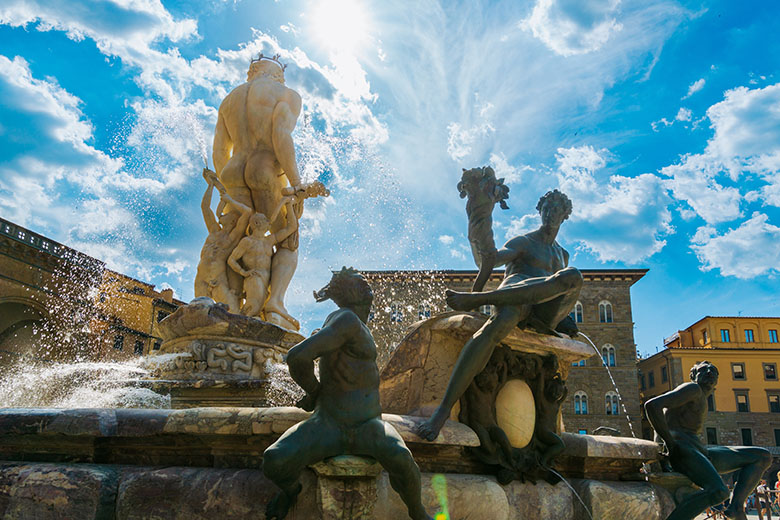
Piazza della Signoria statues
Piazza della Signoria houses a variety of remarkable statues. Let’s start from the ones you see looking straight at the Palazzo Vecchio: the Marzocco, the lion with the Florentine lily which symbolizes Florence, and Judith and Holofernes. Both are copies: the originals, by Donatello, are respectively in the Bargello Museum and in Palazzo Vecchio.
Michelangelo’s David is the other extraordinary copy that stands right in front of the palace: the original is at the Accademia Gallery. Other lovely statues are housed inside the Loggia dei Lanzi. The highlights include Perseus, by Benvenuto Cellini, the Rape of the Sabine Women, and Hercules and Nessus both by Giambologna.
Piazza della Signoria tickets and practical information
Do you need a ticket to access Piazza della Signoria? Absolutely not: albeit beautiful and historically important, it is a “regular” city square that you can excess whenever you please, day or night. You don’t need a ticket to see the Piazza della Signoria statues that are under the Loggia dei Lanzi either; but you cannot walk among them holding food or drink, so make sure you finish your gelato before you walk up. The only places you need tickets for in Piazza della Signoria are the Museum of Palazzo Vecchio and the Gucci Museum.

